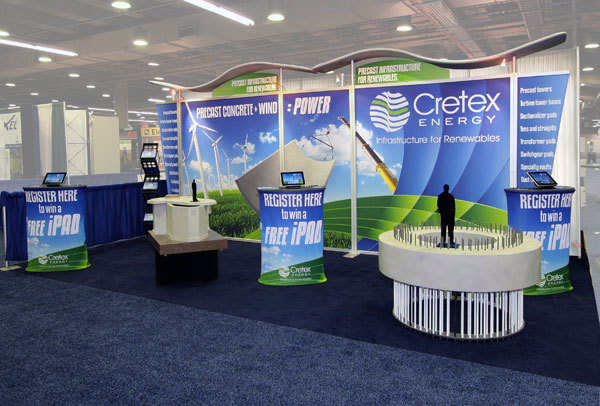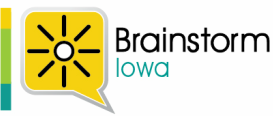|
By Paul Bridson  1. Proper planning Planning is the most important cost cutter. In the trade show business, late fees are very expensive, so avoiding them is crucial. Start by writing down all the dates and deadlines, then move them all back a couple of weeks to give yourself some cushion. This isn't cheating. A fundamental truth about trade shows is that something WILL go wrong, so plan for extra time to allow for that inevitability. Order all the products, supplies and services that you need in advance. Most contractors will give you a small discount for prepayment. By ordering early, you not only save money, but you can also avoid delays, costly errors and compromises. 2. Promotional production Produce all of your pre-show mailings, brochures and logo giveaways at the same time to save on printing expenses, rather than printing several times throughout the year. Doubling the quantity of a small print order often only adds a few dollars to the price compared to a reprint which will double the cost because it's printing the same job at two different times. 3. Display graphics Take a moment and consider what it is that REALLY stops a prospect from walking right past you at the show. Is it your cool literature rack, your cute logo squeeze balls or the locking conference room built in to your backwall? While those things may be nifty, here's the real scoop: Attendees are walking along consciously or subconsciously asking one thing over and over up and down every single aisle: "What's in it for me?" Prospects are interested in how you can improve what they're doing or how they're doing it. Can you save them time, make their lives easier or help be more profitable? If a prospect looking at your exhibit can answer that question from a distance in about five seconds, you won't be able to keep them away. That means that graphics are way more important than the backwall, the lighting, the promotional products or any of the other "things" that you've got in your booth. Hire an experienced professional to help you develop a visual message that's a real show stopper, then decide how much backwall you can afford to hold it up. Remember: message first, then hardware. 4. Buying a display Three words: COST OF OWNERSHIP. Burn that phrase into your mind. The purchase price should be secondary to cost of ownership. Typically, cost of purchase accounts for only 10% (or less) of a display's annual budget. The invisible other 90% are setup, drayage, shipping, handling and repair fees. Many an exhibitor has "gone cheap" up front, only to find that the display is too expensive to actually use! An exhibit vendor worth dealing with will happily provide you with information regarding the cost of ownership of any display being proposed. Double-check the math and make your decision by choosing the best exhibit for your long-term needs. Consider one that packs compactly to save on storage, lightweight to save on shipping, portable to transport by car, courier or as airline baggage, sets up easily to save on installation fees and adapts easily to different spaces by adding or removing components. 5. Packing supplies Create a "show box" containing handy items that are often not available at the show site. Include a stapler, packing tape, Velcro, scissors, Swiss army knife, pens, markers, paper, extension cords, extra light bulbs, Windex, paper towels and rags. Remember to re-stock the box after each show. 6. Literature Over 90% of literature passed out at trade shows never makes it home. Yikes! Take only enough literature to distribute to highly qualified leads. Offer to send literature to less qualified prospects, and then make sure it's in their in-box or on their desk by the time they're back from the show. How do you do that when you're attending the same show? Send the day's leads home every evening, and have someone in your office send the literature out the very next day. Not only is this a really green thing to do because it prevents so much paper from ending up in the landfill, it also impresses the heck out of your prospects. You look uber efficient. But wait, there's more. This strategy also saves you money! Those brochures and catalogs aren't cheap, and you've just saved a ton of money by not giving them to people who will throw them away 90% of the time, and you've saved money by not having to ship so many back and forth from the show. 7. Transportation When you consider a display, investigate how you're going to ship it. Lightweight, durable systems save on shipping and drayage. Keep an accurate record of actual weight, content and number of containers. Specify the weight on your bill of lading. Do NOT let the shipper do this because they will estimate high. You can also save a ton of money by consolidating materials in one tub or shrink wrapping individual items onto one pallet. Don't scrimp on shipping containers. Redoing damaged graphics can be expensive. 8. Travel Investigate reduced rates or special deals with the airlines for ten people or more traveling to and from the same city. Book early and ask hotels for any specials or corporate rates. Explore Saturday night stay-over rates. An extra night at the hotel may be less than the extra airfare. Use airport shuttles instead of taxis. 9. Show services Pre-order show services -- electrical, phones, cleaning services and so on -- at least 10 to 30 days prior to the show. The floor price is often 10 to 20% higher that the pre-order rate. Order more wattage than needed so you don't risk an electrical breakdown and then have to pay a higher floor price. If you use show labor, consider contracting with a national labor management company who treat you like a customer, will be more familiar with your exhibit and consequently faster at setup and tear down, and may be willing to negotiate a lower rate based on how many shows there are in your schedule. Talk to your exhibit house. A good one should be able to manage this for you.
0 Comments
|
800-760-7706Paul Bridson and Kelly SargentWe've been helping companies achieve lofty goals for over twenty years now. Here's the benefit of our experience! Archives
July 2018
Categories
All
|


 RSS Feed
RSS Feed